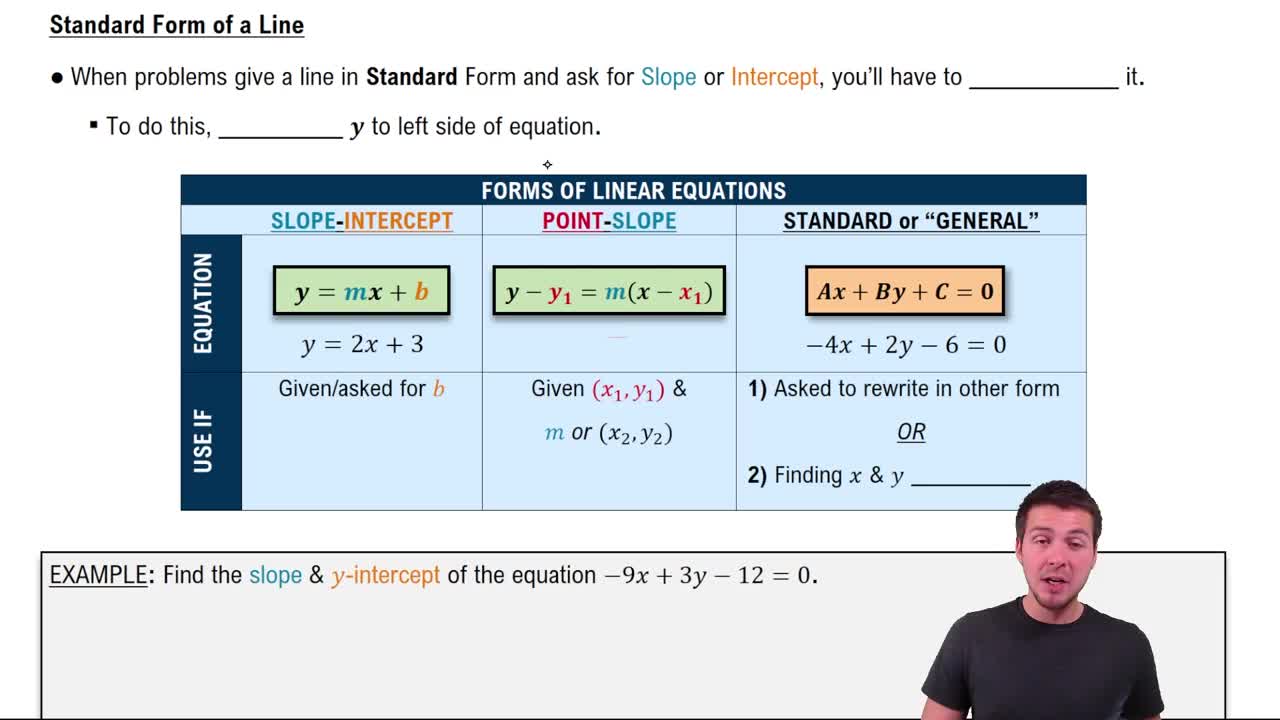Here are the essential concepts you must grasp in order to answer the question correctly.
Slope
Slope is a measure of the steepness or incline of a line, typically represented as 'm' in the slope-intercept form of a linear equation, y = mx + b. A slope of 0 indicates a horizontal line, meaning there is no change in the y-value as the x-value changes. This is crucial for understanding how the line behaves in relation to the x-axis.
Recommended video:
Y-Intercept
The y-intercept is the point where a line crosses the y-axis, represented as (0, b) in the slope-intercept form y = mx + b. In this case, the y-intercept is given as (0, 3/2), indicating that when x = 0, y equals 3/2. This point is essential for graphing the line and understanding its position on the coordinate plane.
Recommended video:
Standard Form of a Linear Equation
The standard form of a linear equation is typically expressed as Ax + By = C, where A, B, and C are integers, and A should be non-negative. This form is useful for quickly identifying intercepts and is often used in conjunction with slope-intercept form to convert between different representations of a line. Understanding how to manipulate these forms is key to solving linear equations.
Recommended video:
Standard Form of Line Equations
 Verified step by step guidance
Verified step by step guidance Verified video answer for a similar problem:
Verified video answer for a similar problem:

